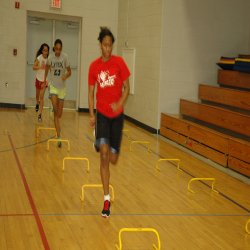Athletes are more agile moving in directions that are better supported by their dominant leg.
A new study found that side-stepping and turning at 135 degrees was better for athletes when moving in the direction in which their dominant leg was doing more work. Additionally, the researchers also found that the dominant leg was significantly stronger compared to the non-dominant leg.
Conclusions
Asymmetries have long been recognized as a risk factor for injury, but this study suggests that asymmetries can have a major effect on athletic performance as well. Coaches who wish to maximize the ability of their athletes should screen for discrepancies between left and right performance measures and provide the necessary drills and exercises to correct any imbalances.
References
